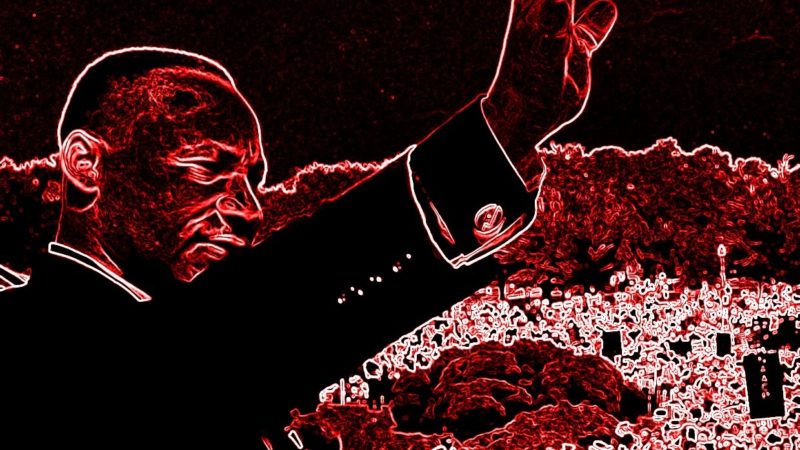There’s Something Happening Here
On Friday evening, April 10, the Upper School Racial Awareness at Waynflete (RAaW) group sponsored its annual movie night, a program designed to heighten awareness in our community about a topic they regard as important. This year, the group decided to sponsor a viewing of the recently released documentary, Nas:Time is Illmatic, which tells the story of the creation and release of the first album by the rapper Nas. The viewing was preceded by a potluck dinner and a short presentation by Dr. Don Sawyer, a sociology professor at Quinnipiac University. Dr. Sawyer teaches the course, The Sociology of Hip-Hop Culture, which draws from his research of urban education, visual sociology, youth culture, hip-hop culture, and youth critical media literacy. Dr. Sawyer, who is about the same age and who grew up in Harlem in similar circumstances as Nas, then led the lively discussion that followed the film.
RAaW movie nights are always important events as they provide a forum for students to bring topics to our community for discussion that they believe we should have in focus. This year, given the recent killings of young black males across the country, the unusual media attention they have received, and the ongoing activism by such groups as #BlackLivesMatter, racial tensions in America were already a topic of discussion at school. Several students – some members of RAaW, some not – had come to see me in the fall asking for a forum in which to talk. We invited students to share their thoughts through essays which were then used to determine who would represent Waynflete at the NAACP Martin Luther King breakfast in January, we had an assembly designed to highlight RAaW and the kind of discourse in which they engage, and we dedicated an advising lunch to engaging all of the Upper School students in RAaW style conversations. This year’s movie night was a fitting way to deepen the discourse.
In addition, how the event came into being and its success demonstrated key components of what makes the Waynflete experience distinct. First, as is true with much of the good work that happens at Waynflete, the event was student driven and facilitated by adults who encourage student voice and initiative, support them, and then step aside and let the students lead. In this case, those adults were RAaW faculty leaders Sue Stein and Lorry Stillman. RAaW itself is student driven. A multicultural group open to anyone, it was formed in 2008 in response to student interest in having conversations about race. This desire surfaced at a time when Americans were in the process of electing their first African American president, In light of the election, talk had started about the possibility that we were entering a post-racial era, but that didn’t feel accurate to the founding group. In addition to helping students work through the logistics of the evening, Sue and Lorry have played key roles in creating the context for meaningful community conversations about race by having facilitated such discourse in RAaW meetings and retreats for years and by helping the group bring important topics to the community through movie nights and Upper School assemblies.
Second, this year’s movie night was created by students from different backgrounds coming together around a common interest, opening up a conversation, and learning from each other. While the structure of the evening fit the usual format of a RAaW movie night, the process for selecting the film was different this year. In the fall when the Nas documentary was released, two freshmen boys, who were not members of RAaW, attended a screening. They entered the screening with an interest in the artist and his music; they left it with a profound insight into the world around them and filled with an overwhelming desire to share what they had learned with their classmates. They discussed the idea of showing the film at school with me, with Sue and Lorry, and with the members of RAaW. The group liked the idea so much that they chose it for their movie night. They then invited Dr. Sawyer, who had attended one of their meetings earlier in the year, to provide context for the film and to lead the discussion afterwards.
Third, the program inspired intellectually rigorous learning in which students were genuinely invested. The efforts by RAaW to bring meaningful conversations about race to the wider community are sometimes met by the complacency of those who see Martin Luther King Jr. as a primarily historical figure and the civil rights movement he led as a relic of the past. This year’s event, which attracted scores of students from other schools as well as from Waynflete, contradicted any sense of racial complacency in the assembled youth. In the question and answer session after the film, Dr. Sawyer was peppered with questions about the roots of hip hop culture within the broader context of American society and government policies, about the coded meaning of its musical lyrics, about how the appropriation of the music happened once corporate America figured out that the music would sell to white youth in the suburbs, and about how that appropriation distorted not only hip hop music into what is widely played today but also, through the music, much of the perception of black culture by the white majority.
On a personal note, I chose a lyric from the Buffalo Springfield song For What It’s Worth as the title for this article intentionally. When I was in high school, I hated my English classes and went to college planning to study math, with the hope of never having to read another novel again. The whole world of literature was opened to me through learning outside of classes with my friends about the sociological roots of the music to which we were listening, including Buffalo Springfield, Bob Dylan, Joan Baez and many others. I could see that same learning happening for the students in the audience at the movie night as the documentary itself and Dr. Sawyer used the music to heighten consciousness about the world in which they live. While we may never know how many history, sociology, and literature majors were born that night, we can be confident that every person in the audience, including myself, left with a much deeper understanding of hip hop as a cultural phenomenon that reveals an important part of the American story.
Perhaps Dr. King is not a relic of the past after all.
I am grateful for our students and their passions and for the faculty who inspire and guide them, on this and so many other endeavors.




